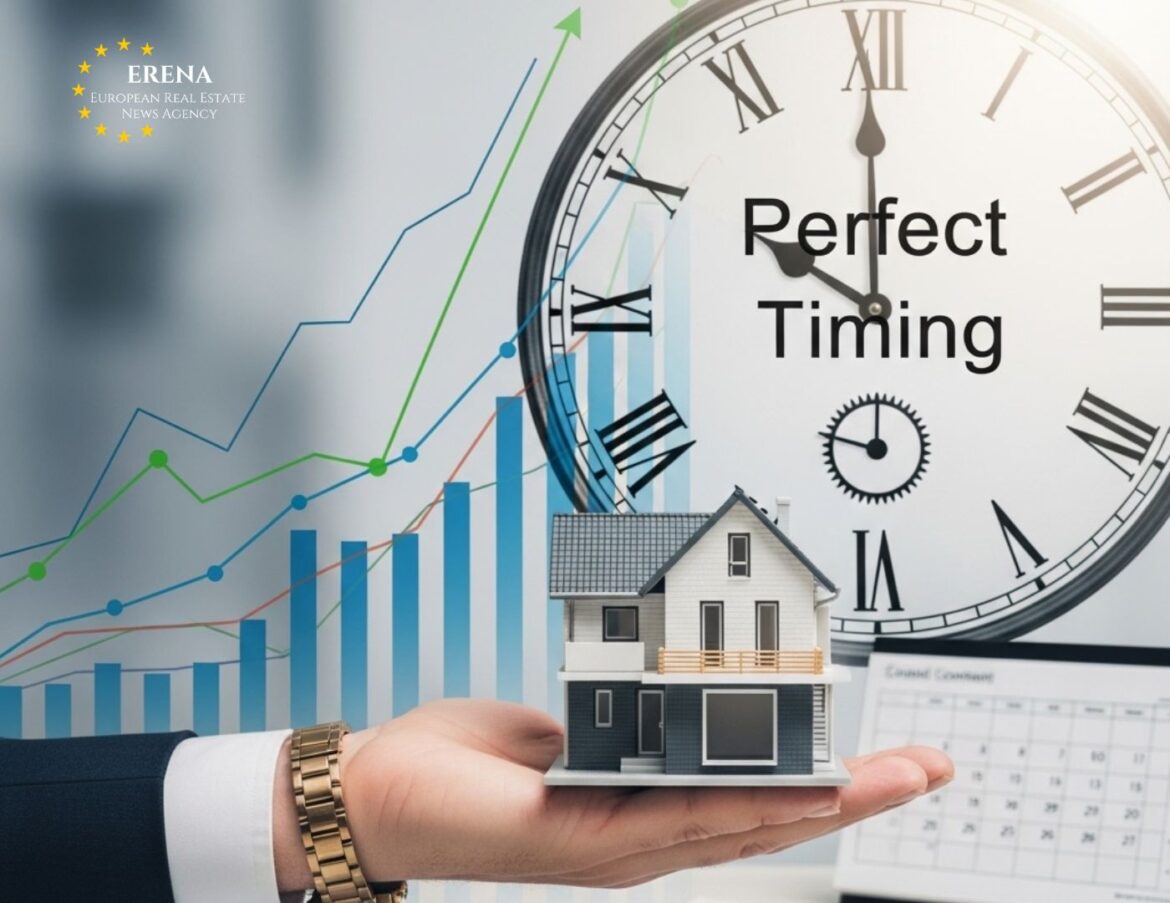In real estate, timing is everything. Choosing the right moment to sell can dramatically increase your profit — sometimes by tens of thousands of euros. But how do you know when it’s the right time to list your property? Answering this question requires a thorough understanding of market trends, macroeconomic indicators, local dynamics, and seasonal behavior. In this article, we’ll explore how to time the real estate market for maximum return — especially in the context of the evolving European housing landscape in 2025.
Why Timing Matters
Although real estate is generally a stable long-term investment, it’s still subject to market cycles. There are periods when demand and prices rise sharply — and others when the market cools. Selling during a peak can yield far higher profits, while mistimed sales in slow markets can mean lost income and longer listing times.
Key Indicators to Watch
1. General Market Trends
Start by following broad economic signals:
- Interest rates: When the European Central Bank lowers interest rates, mortgages become cheaper, driving demand upward. In 2025, after rate hikes in 2023–2024, rates have begun to stabilize, reactivating markets across much of Europe.
- Inflation and consumer confidence: High inflation erodes buying power. As inflation eases, confidence and transaction volumes rise.
- Employment levels: Lower unemployment rates often correlate with stronger real estate activity and higher homebuyer confidence.
2. Seasonal Cycles
Timing within the year also matters:
- Spring and early summer (March–June): traditionally the hottest selling season. Buyers want to close deals before holidays or school years start.
- Autumn (September–October): another active window.
- Winter (December–January): typically slow, with reduced buyer activity during holidays.
3. Local Market Dynamics
While regional or national trends are important, local factors are critical:
- New construction nearby
- Infrastructure improvements (public transit, schools, parks)
- Changes in zoning laws or rental regulations
Even in a cooling national market, some neighborhoods can experience localized booms due to supply shortages or development incentives.
4. Neighborhood Supply and Competition
Study similar listings within a 1–2 km radius. If the market is saturated with comparable properties, you might want to wait. If inventory is low and demand is high, it could be the perfect time to list.
What the 2025 Data Says
Recent reports suggest that the European real estate market is gaining momentum again:
- In France, the average square meter price in Paris rose by 2.3% during the first five months of 2025.
- In Germany, prices in Berlin increased by around 4.1%, particularly in the resale segment.
- In Spain, demand from international buyers surged in cities like Barcelona and Valencia, pushing prices up by 3.5% compared to 2024.
These trends suggest that mid-to-late 2025 may be an optimal period to sell in many key cities.
How to Know It’s the Right Time
You’re likely well-positioned to sell if:
- You receive solid offers close to asking price without major negotiation
- Similar homes in your area sell within 30–60 days
- Your agent reports low inventory and high buyer activity
- Mortgage rates are stable or dropping
- You are personally and legally ready to sell
Tips for Selling Smart
1. Prepare the Property
Staging, decluttering, professional photos, and even 3D virtual tours can boost perceived value and draw in buyers willing to pay more.
2. Hire the Right Agent
A good agent understands your local market, can assess buyer trends, and provide honest advice on timing. They also know how to market the property effectively.
3. Track Early Response
If your listing attracts 5–7 inquiries and 2–3 viewings in the first week, that’s a positive sign. No activity? Either the timing isn’t right or your price may be too high.
4. Use Scarcity to Your Advantage
If few similar properties are available nearby, highlight this in your marketing. Scarcity often increases perceived value.
5. Watch Buyer Behavior
Buyers often monitor markets for weeks before acting. If you get close-to-asking-price offers within 6–8 weeks, it’s likely the right moment to accept.
What If the Market is Cooling?
Even if conditions are less than ideal, you have options:
- Rent the property short-term and wait for better conditions. In many European cities, temporary rentals generate income while the market recovers.
- Offer rent-to-buy deals, particularly in regions where mortgages are harder to obtain.
- Incentivize quick sales by offering price reductions for buyers who can close within 2–3 weeks.
Tools to Help You Decide
- Google Trends — track interest in real estate in your city or region
- Portals like Idealista, Immowelt, Seloger, Immobiliare.it — monitor price changes and time-on-market
- Market reports from Eurostat, UBS, Knight Frank, Savills — follow macro indicators
- Hire a property evaluator for an expert, unbiased view of current value
Conclusion
Timing your property sale right is both an art and a science. Selling during a period of strong demand, stable financing, and low competition gives you the best shot at maximizing profit.
In 2025, many European cities are showing positive signals — increasing prices, strong buyer interest, and stable financing options. If your property is well-located and you’re ready, now may be the perfect time to act.
However, every sale is unique. Smart sellers analyze, consult professionals, and stay attuned to both market and personal readiness. With the right approach and timing, you can turn your property into a top-performing asset.

